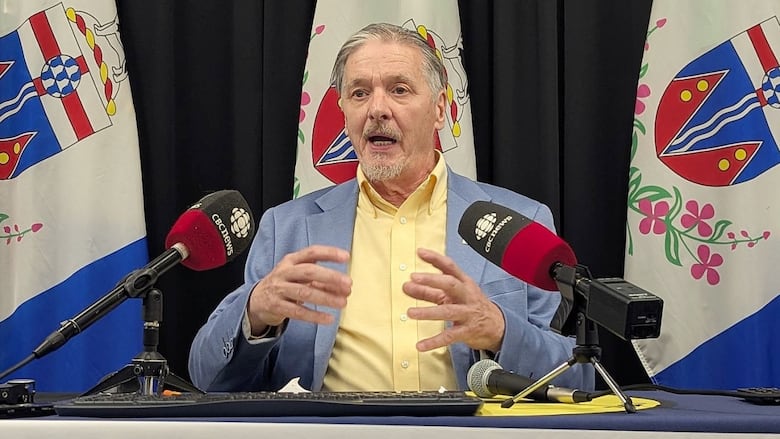Elections Yukon tries to drum up interest in electoral reform plebiscite without a ballot question
Voters will be asked to choose between the current electoral system or one with ranked ballots

Take it from your friendly neighbourhood reporter: how you phrase the question matters.
Sometime this year, Yukon voters will be asked whether they want to keep the existing first-past-the-post system or adopt a new one where voters can rank candidates by preference. They'll cast ballots for the plebiscite at the same time they vote in the territorial election.
But after months of planning, the Yukon's chief electoral officer is still without a finalized question that will appear on the ballot. That's because drafting the question is the responsibility of the Executive Council Office, which has legal authority over Election Yukon.
Speaking to reporters Thursday, Maxwell Harvey, the Yukon's chief electoral officer, admitted the delay isn't ideal.
"I just know that the process is a government process and it takes what it takes," he said. "Certainly it is later than we thought we would have it."
The government issued regulations in early June under the Plebiscite Act to allow the vote to take place at the same time as the general election. In an email, a spokesperson for the Executive Council Office said those regulations were required before officials could start work on drafting a question for the plebiscite.
The 56-page package of regulations says the question "must be clear, concise and impartial; and phrased in a way that is not misleading or confusing to voters."
Still, Harvey and Elections Yukon are plowing ahead with efforts to educate the public about what exactly it is they'll be voting on.
The two options will be the existing electoral system, known as first-past-the-post, where voters pick their favourite candidate and the one with the most votes wins.
That system is simple and familiar. But critics say it also tends to wildly distort election results, allowing parties to sometimes form majority governments with far less than 50 per cent of the vote.
The other option is a ranked ballot system, where voters rank their preferred candidates. If no candidate immediately gets 50 per cent of the vote, the lowest ranked candidate is dropped off and their voters' second choices are added to the tally. That continues until a candidate gets to 50 per cent plus one.
That system is a little more complicated. It takes much more time to count, unless tabulation machines are involved. But it means the winner of each riding has support from a majority of voters. Ranked voting is used in Alaska, Australia and Ireland, among other places, Harvey said.
Harvey also said ranked voting is no more likely to result in minority governments than first-past-the-post.
The ranked ballot option is the suggestion of a citizens' assembly on electoral reform. That assembly is the product of a legislative committee on electoral reform, which was an NDP condition for entering a confidence and supply agreement with the Liberals.

